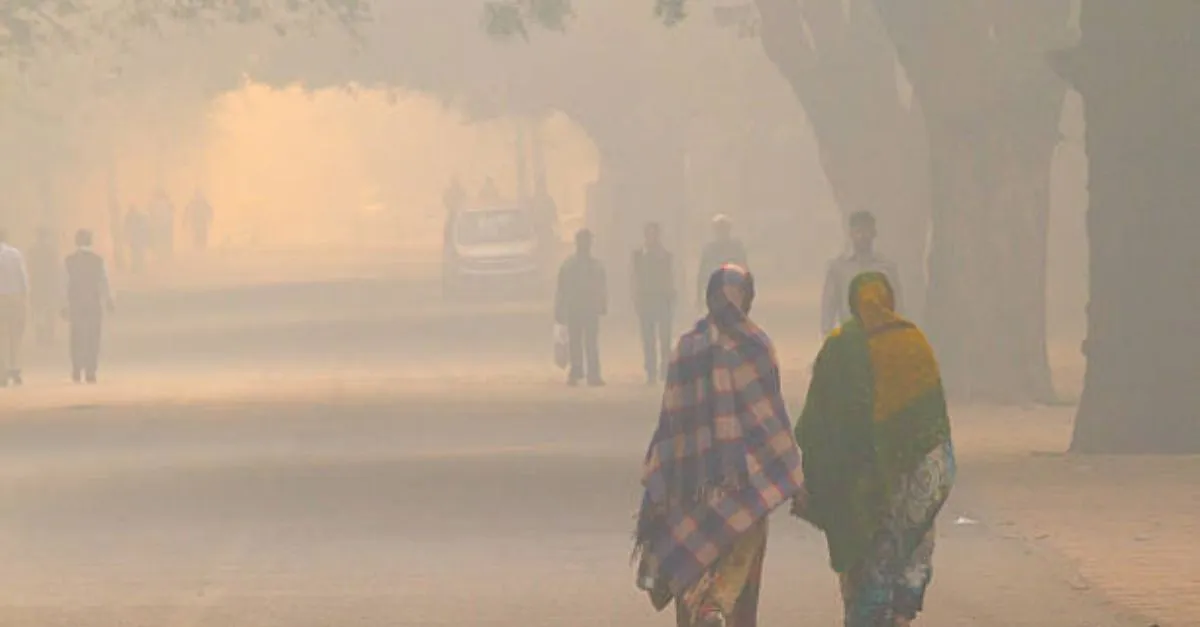- By Yashashvi Tak
- Mon, 20 Oct 2025 08:30 AM (IST)
- Source:JND
Delhi’s air quality remained in the “very poor” category on Diwali morning, with 24 out of 38 monitoring stations reporting high pollution levels. According to the Central Pollution Control Board (CPCB), the city’s overall AQI stood at 333. Anand Vihar entered the “severe” zone with AQI readings above 400. Data from the World Air Quality Index project (AQICN) showed Anand Vihar’s AQI at 464, while Rohini and Satyawati College also recorded “severe” levels at 403 and 432, respectively.
As per the World Air Quality Index project (AQICN), the AQI near ITO stood at 287, while readings at Major Dhyan Chand National Stadium, Burari Crossing, Parparga, and ITI Shahdara were recorded at 276, 266, 252, and 247, respectively, all falling in the “poor” to “very poor” category.
According to the department’s forecast, Delhi’s air quality is likely to worsen further, slipping into the “severe” category on Tuesday and Wednesday, the days following Diwali. Data from the Decision Support System (DSS) showed that transport emissions contributed 15.1% to the city’s total pollution on Sunday.
AQI Chart
An AQI between 0 and 50 is considered 'good', between 51 and 100 is 'satisfactory, between 101 and 200 is 'moderate', between 201 and 300 is 'poor', between 301 and 400 is 'very poor', and between 401 and 500 is 'severe'.
GRAP 2 Implemented
As Delhi’s air quality worsened, the Commission for Air Quality Management (CAQM) enforced Stage II of the Graded Response Action Plan (GRAP) across the National Capital Region (NCR) on Sunday evening to curb further pollution.
“The AQI of Delhi has shown an increasing trend since morning and has been recorded as 296 at 4:00 PM and 302 at 7:00 PM. The forecast by IMD/IITM also predicts further deterioration of AQI in the coming days,” the order stated.
Implementation of actions under Stage-II (‘Very Poor’ Air Quality) of the extant schedule of GRAP comes into immediate effect in Delhi-NCR. pic.twitter.com/kJhEbkDrHd
— ANI (@ANI) October 19, 2025
1. Several curbs have been imposed in Delhi and the NCR under Stage II of the Graded Response Action Plan (GRAP) to tackle rising pollution levels.
2. Inter-state buses from NCR states are barred from entering the capital.
3. The use of diesel generators has been restricted.
4. Parking fees have been increased to discourage private vehicle use.
5. Construction activities will operate on a limited scale.
6. Authorities will carry out daily sweeping and water sprinkling to control dust pollution.
ALSO READ: Punjab Stubble Burning: 132 FIRs Filed, Rs 5.6 Lakh Fine Imposed After State Reports 241 Cases
GRAP Stage I
These measures build upon restrictions under GRAP Stage I, which were implemented on October 14. Stage I included bans on labour-intensive construction without dust control, mandatory water sprinkling at project sites, increased inspections of polluting industries, and stricter CNG compliance for public transport.

